Technology
Latest molding technologies
Our facilities are equipped with a diverse assortment of molding technologies, enabling us to manufacture various types of products. Here thence,we will introduce our three key features along with our manufacturing and development achievements.
Fusion of different materials
Contribution for product development through combinations of different materials
- Using MMP (Mold Master Plate) sandwich molding, we have developed eco benches across Japan with foaming material from supermarkets which are used for the core layer.
Through such initiatives, we have been contributing to society in meeting the SDGs. Furthermore, using MMP applied bicolor molding technology which enables the use of different materials on a section of products, we are able to manufacture single types of molds with added features. - “POLYMETAC” or “Plastic Metal Composite (PMC)” is a technology that takes advantage of the properties of metals and resins to bond them into one. Replacing portions of metal components with resin can reduce weight and even enhance design properties.
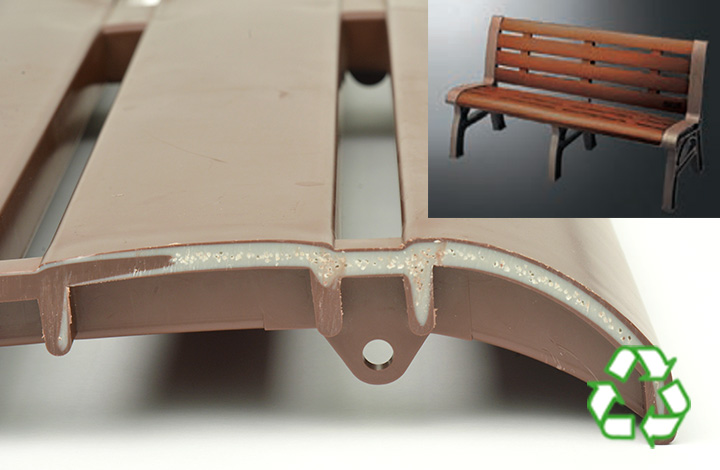
Eco benches created using MMP sandwich molding
(Provided by Chuo Kagaku Co., Ltd)
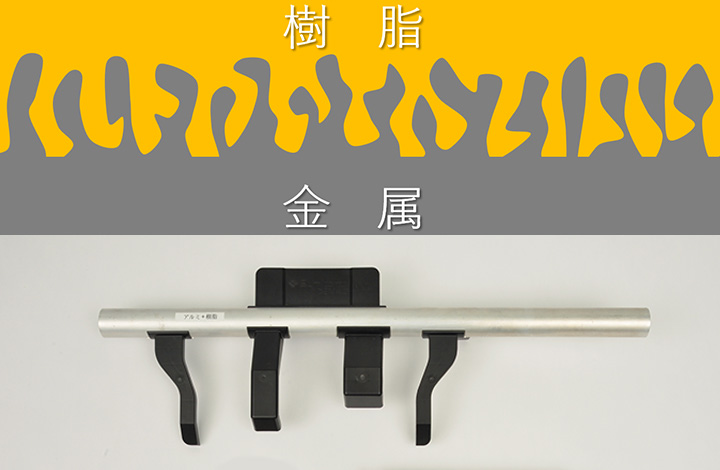
POLYMETAC(PMT)
(Provided by Mitsui Chemical. Inc.)
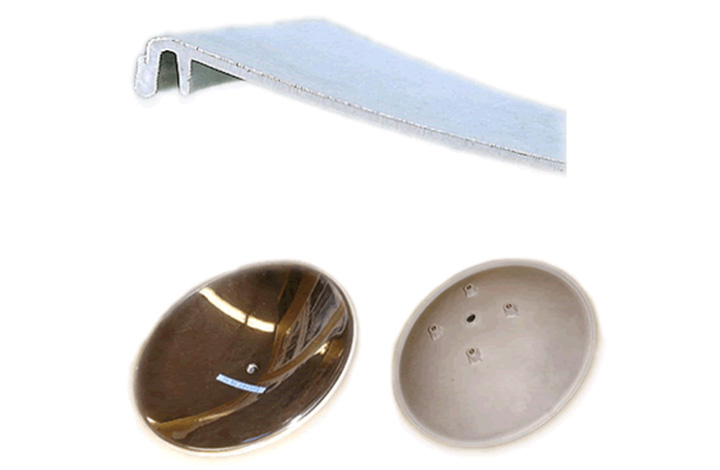
Plastic Metal Composite (PMC)Parabolic antenna with a front metal surface and a rear resin surface.
Challenging new technologies/techniques in demand around the world
Potential for solutions to issues with various products
- It is extremely difficult to make a large-sized (2,000mm×1,400mm) molded product with a transparent thick wall (13 mm). However, we can create molded parts with no distortion using our molds for injection molding.
- In-mold molding and Multi-Injection Molding (MIP) require advanced technology to mold multiple materials (glass, film, PEF, etc.) in a mold. Our molds can be used in various combinations.
- Air-molded and aqua-molded parts it possible to create hollow molded articles with complex shapes, resulting in products with lighter weight, higher rigidity, and free from shrink marks.
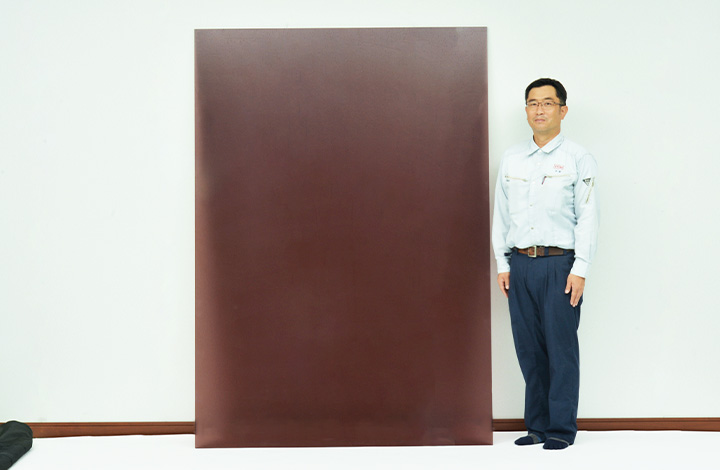
Injection molding for transparent parts use in the windows of high-speed trains, etc
(Provided Renias)
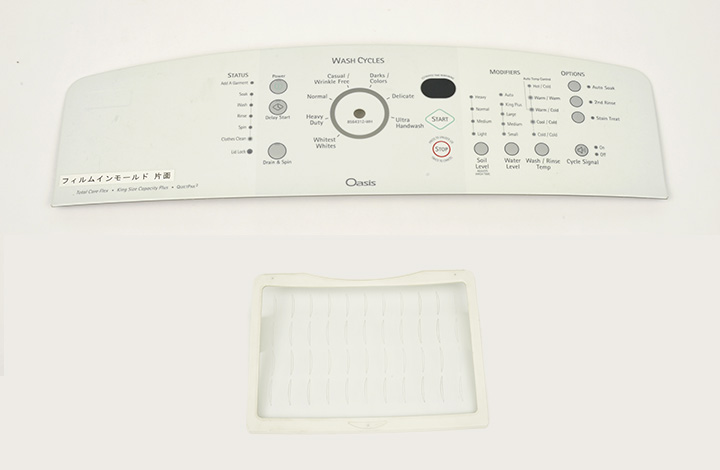
In-molding
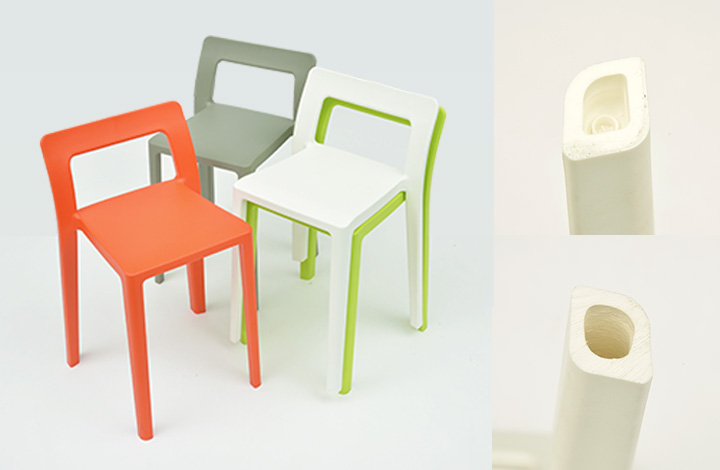
Receipt of the Red Dot Design Award, one of the three major design awards in the world. Provide by Iwatani Materials Corp.
Enabling the creation of lightweight and high strength plastics
We possess prototypes dedicated to meeting the need for lightweight and high strength products.
- Foam molding (MuCell and Core Back) creates a minute fine microcell structure inside resin, helping improve accuracy as well as reduce weight.
- Injection molding of longer fibers [Long Fibers Injection Molding] (D-LFT) can improve strength and reduce weight by maintaining carbon fibers and glass fibers for a long period of time.
- Innovative composite molding technologies can improve strength and reduce weight as a substitute for metal by molding materials such as carbon fibers, UD tape, cellulose (CNF), etc. with resin. (HPRTM, CSMC, CFRP)
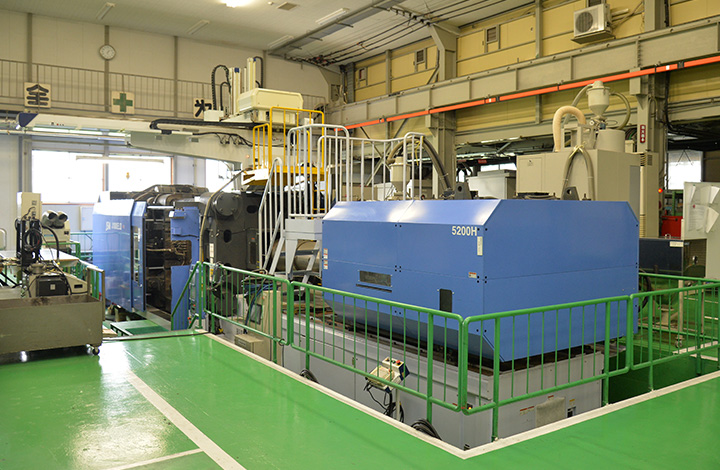
Foam molding (MuCell) equipment / 1,000 tons (L-positive 2 material)
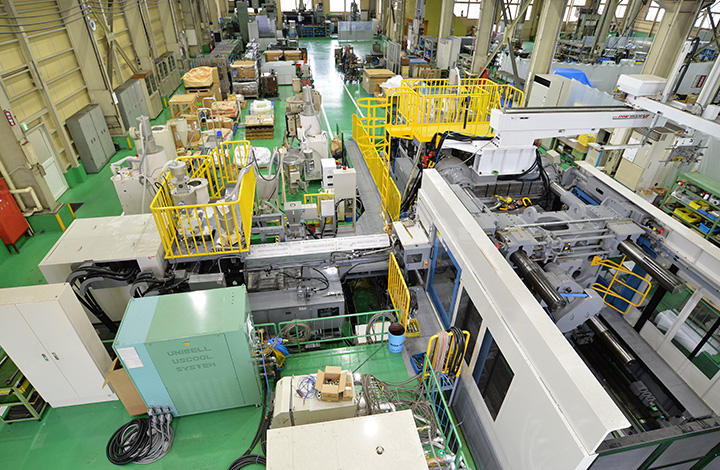
Long fiber injection molding (D-LFT) equipment / 1600t (L-positive 2 material)
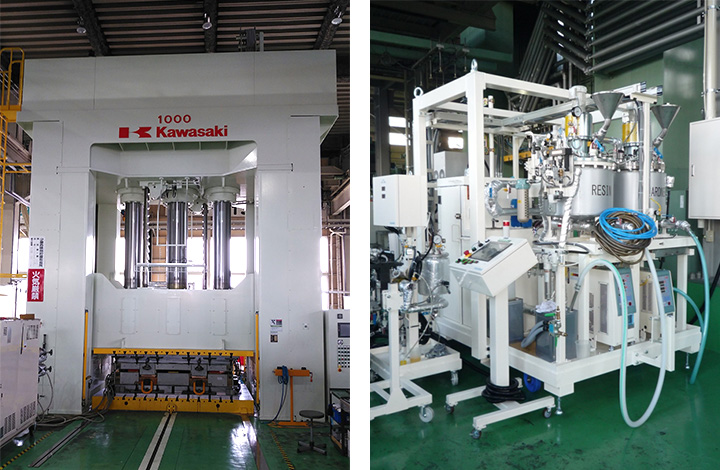
Innovative Composite Molding Machine 1000t Press + HPRTM Machine
Technology development (industry-government-academia collaboration)
Enhanced development of innovative composite materials through collaboration between industry, government and academia.
We aim to contribute to the creation of a sustainable society through the next generation of manufacturing technologies. This includes the development of lightweight and high strength sustainable products that utilize carbon fibers and cellulose based on academic theory in the field of materials with the potential to reduce the burden on the environment.
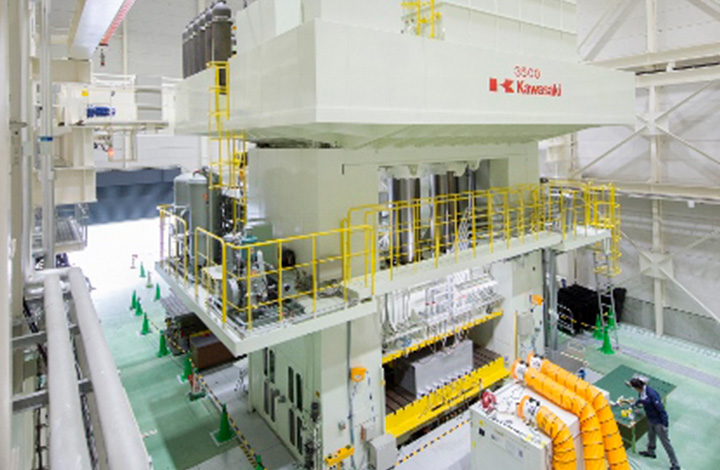
Nagoya University with KYOWA
As part of joint research with Nagoya University National Composites Center (NCC), we have been working to make automobiles more lightweight through thermoplastic CFRP and have been carrying out demonstrative research on high-speed press molding (LFT-D) for larger objects.
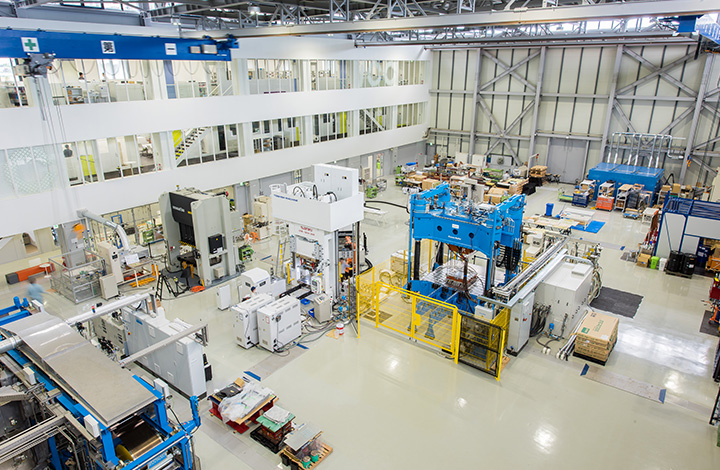
Kanazawa Institute of Technology with KYOWA
In a joint development with the Kanazawa Institute of Technology, Innovative Composite Materials Research & Development Center, we have been carrying out research and development on innovative composite materials such as carbon fibers as a way to support product development.
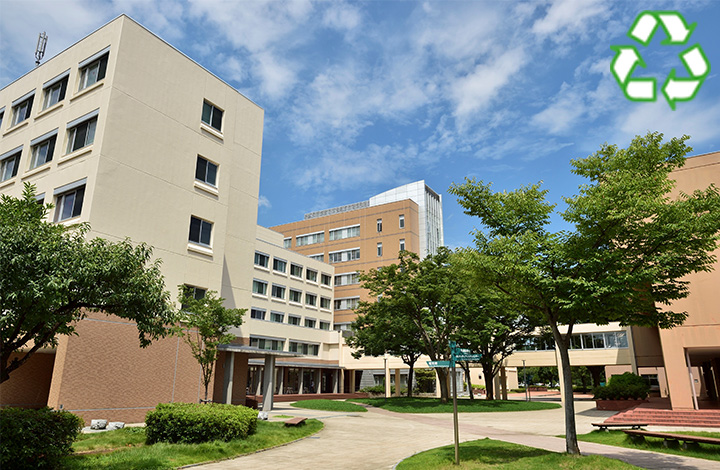
Nagaoka University of Technology, Mitsui Chemicals with KYOWA
We have been collaborating in joint research (development of recycling technologies for plastics) with Nagaoka University of Technology, which has been appointed as a United Nations Academic Impact Hub for SDG 9 (Industry, Innovation and Infrastructure) and Mitsui Chemicals with the aim of fostering regional collaboration and putting recycling technologies for plastics into practical application.
